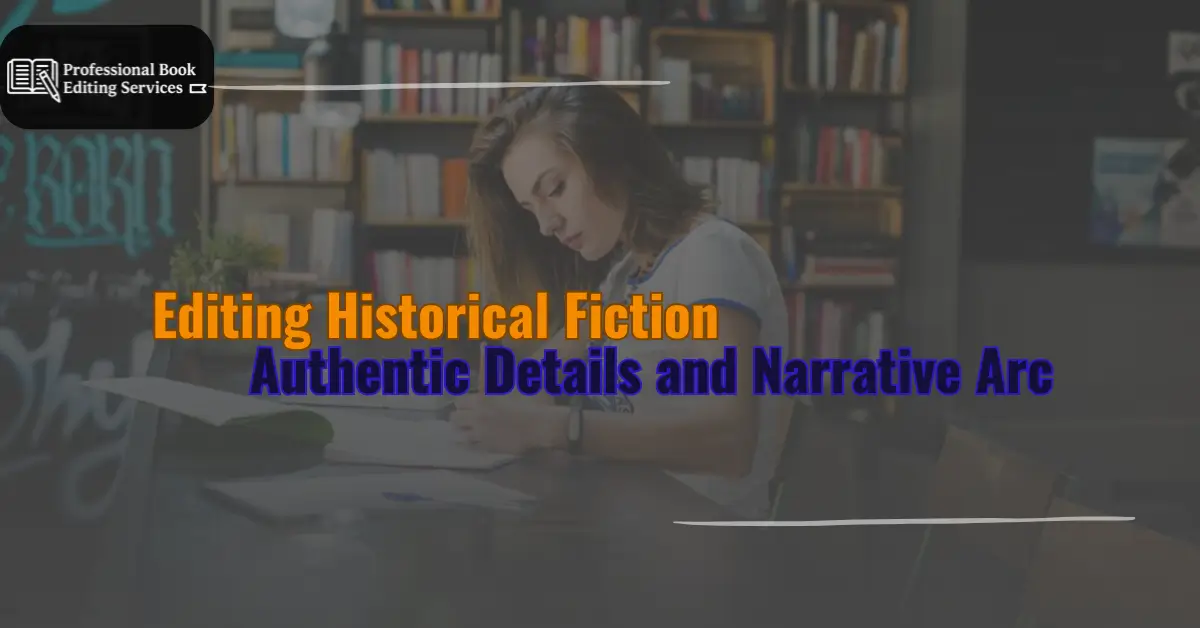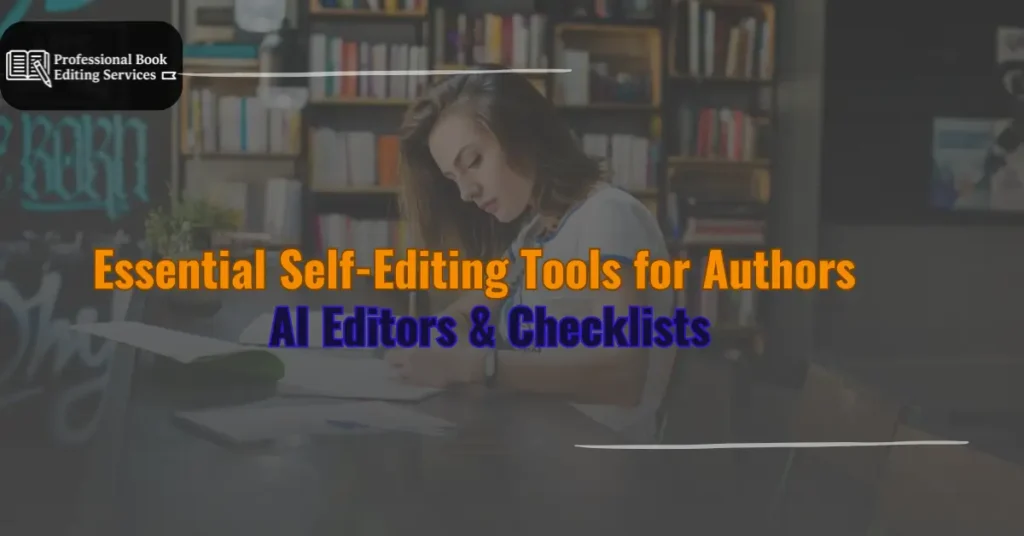Historical fiction offers the best of both worlds: immersive storytelling and the richness of real history. Readers turn to these books not just for engaging characters and plotlines, but for the feeling of stepping back in time. This dual expectation presents a unique challenge. Authors must weave accuracy and artistry together seamlessly, and that’s where historical fiction editing becomes indispensable.
A good historical novel doesn’t read like a textbook. It teaches without preaching. It builds authentic settings without slowing the pace. Editors who specialize in this genre understand how to preserve the balance between rigorous research and compelling storytelling. They help authors integrate fact with fiction, ensuring historical details are right while maintaining a smooth narrative arc.
If you’ve ever wondered how book editing works in a genre where accuracy and imagination collide, historical fiction is the perfect case study. Here’s what you need to know.
The Need for Factual Accuracy
Historical fiction may involve fictional characters or invented scenarios, but the world they inhabit must feel authentic. Editors verify the accuracy of events, dates, locations, and customs. They look at how characters speak, dress, travel, and interact. Even small anachronisms, like using a word that didn’t exist at the time, can disrupt the reader’s immersion.
This level of accuracy requires editors to question every detail. Did that political figure exist during this time period? Would this food have been available? Were women allowed in this occupation?
When it comes to historical fiction editing, trust is key. Readers often assume what they read is grounded in reality, especially if a real war, dynasty, or cultural movement forms the backdrop. Editors help protect that trust by flagging inconsistencies or errors that may have gone unnoticed in early drafts.
This approach mirrors parts of non-fiction editing, where facts must be correct, but the tone and flow still need to captivate. The difference is that in historical fiction, facts serve the story, not the other way around.
Integrating Research Seamlessly
Research is the backbone of historical fiction, but it shouldn’t feel like homework. Editors ensure that information is integrated organically into the narrative, not dumped in exposition-heavy paragraphs.
Rather than long blocks of background information, they encourage authors to reveal context through dialogue, character choices, and setting. They might suggest shifting a historical detail into the subtext of a scene or using a character’s misunderstanding to explain a custom naturally.
Writers familiar with memoir editing or YA book editing may already understand how personal experiences can reveal broader truths. The same concept applies here: let the story carry the history, not the other way around.
Editors also help manage the balance between what’s explained and what’s assumed. If too much is left out, modern readers may feel lost. If too much is explained, the pace suffers. The right editor guides this balance with precision.
Maintaining Narrative Momentum
Historical fiction often involves slower pacing, but that doesn’t mean the story should drag. Editors assess the structure of the plot and make sure it builds steadily. Are the stakes established early? Do characters face escalating tension? Is there emotional payoff?
Momentum matters, even in stories set centuries ago. Editors help authors trim lengthy diversions, cut scenes that don’t serve the plot, and keep the reader turning the pages. They also look for opportunities to use historical context to heighten drama and deepen conflict.
This kind of structural guidance shares some DNA with thriller editing, where pacing is king. While the tempo in historical fiction may be gentler, the need for clear arcs and evolving stakes remains just as strong.
Clarifying Creative License
Most historical fiction writers take some liberties with timelines, character relationships, or events. That’s expected. But readers also want to know where the fiction ends and the fact begins.
Editors guide authors in identifying which parts of the story deviate from known history. They may suggest subtle wording changes that signal invention, or recommend an author’s note explaining certain choices.
This transparency helps maintain credibility. It also gives authors more control over how their narrative choices are perceived. A well-placed explanation can strengthen, not weaken, the impact of a creative twist.
Writers with backgrounds in self-help book editing or science fiction editing understand the importance of reader expectations. Editors ensure those expectations are managed properly in historical fiction as well.
Strengthening Characters and Dialogue
Even in a period setting, characters must feel relatable. Editors work on emotional consistency, character arcs, and believable dialogue. They check whether characters speak in ways that reflect their era, but also feel natural to modern readers.
Dialogue is particularly tricky. Too modern, and it breaks immersion. Too dated, and it becomes unreadable. Editors help strike the right balance, offering line edits that preserve tone while enhancing clarity.
They also help writers refine how characters evolve. Are their motivations tied to the societal norms of their time? Do their struggles reflect historical context? Are they shaped by their era, or just dropped into it?
These questions are just as relevant in romance novel editing or YA fantasy editing, where emotional realism and relationship dynamics are critical. In historical fiction, editors bring that same care, with added attention to context and restraint.
Structuring the Full Manuscript
Structure can make or break a historical novel. Some stories move chronologically. Others use framing devices or multiple timelines. Editors help assess whether the structure supports the narrative or creates confusion.
They might recommend reordering chapters, condensing flashbacks, or shifting points of view. They pay attention to transitions, ensuring readers don’t lose track of the timeline or central characters.
These decisions are similar to those made in short story editing, especially in collections with a historical theme. Editors look at the book both as individual scenes and as a unified arc.
They also work on chapter pacing, making sure each segment has purpose and that slow sections don’t create drop-offs in engagement.
Supporting the Author’s Vision
Ultimately, editors don’t rewrite history or the story. They support the author’s vision while guiding it to a more polished, compelling version of itself. They preserve tone, enhance structure, and ensure that the final product is respectful, accurate, and emotionally powerful.
Authors often come to editors after early input from beta readers and editors. Those first impressions are valuable, but editorial feedback takes things further. It sharpens every scene, tightens every plot thread, and elevates every character.
Many authors also use self-editing tools for writers before sharing their drafts. These tools are useful for line-level issues, but can’t manage narrative depth or contextual accuracy. Editors bring a level of insight that software simply can’t replicate.
Genre Overlap and Flexibility
Historical fiction often crosses into other genres, such as romance, fantasy, and mystery. Editors with diverse experience are well-suited to navigate this.
A story that includes romantic subplots benefits from techniques used in romance novel editing. If speculative elements enter the story, such as imagined technologies or magical realism, editors draw from fantasy book editing or science fiction editing experience to ensure coherence.
Children’s or YA historical fiction also brings in the need for age-appropriate content, requiring insights from children’s book editing and YA book editing.
This ability to work across styles strengthens the final manuscript and ensures that it resonates with its target audience.
Conclusion
Historical fiction editing demands a rare combination of fact-checking, narrative insight, and emotional sensitivity. Editors serve as both historians and storytellers. They check accuracy without interrupting the flow. They preserve creative choices while making sure those choices are clear and compelling.
For authors, working with an experienced editor transforms the manuscript into a fully realized story, one that respects history, honors character development, and captures the reader’s imagination from start to finish.
Whether your book leans toward the literary, romantic, or speculative, thoughtful editing ensures it stands the test of time, just like the stories it draws from.





